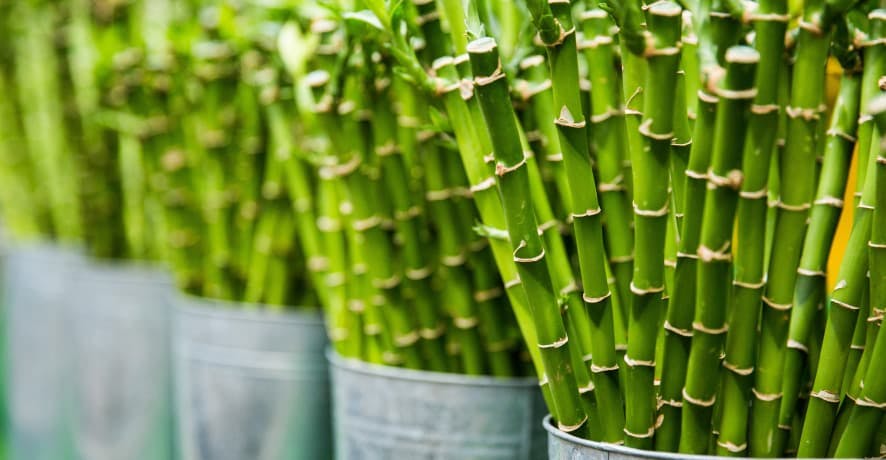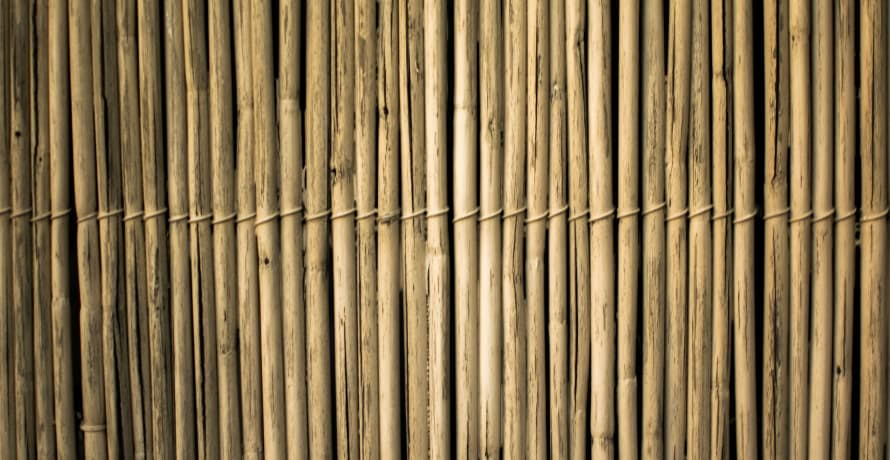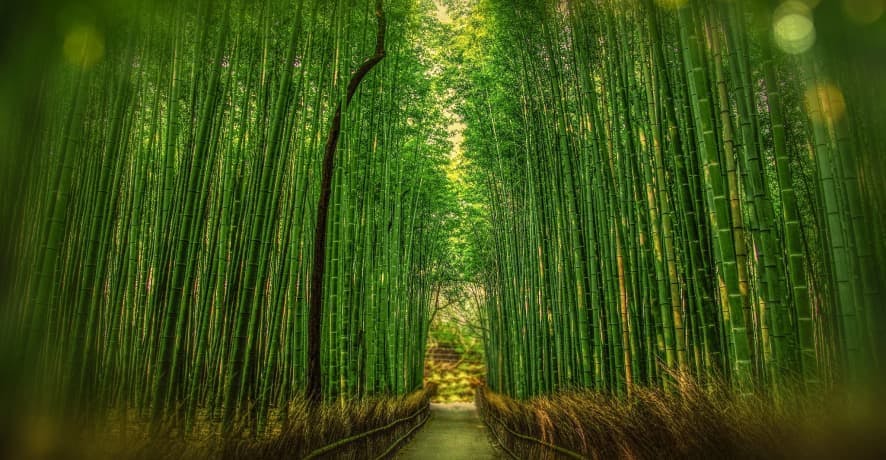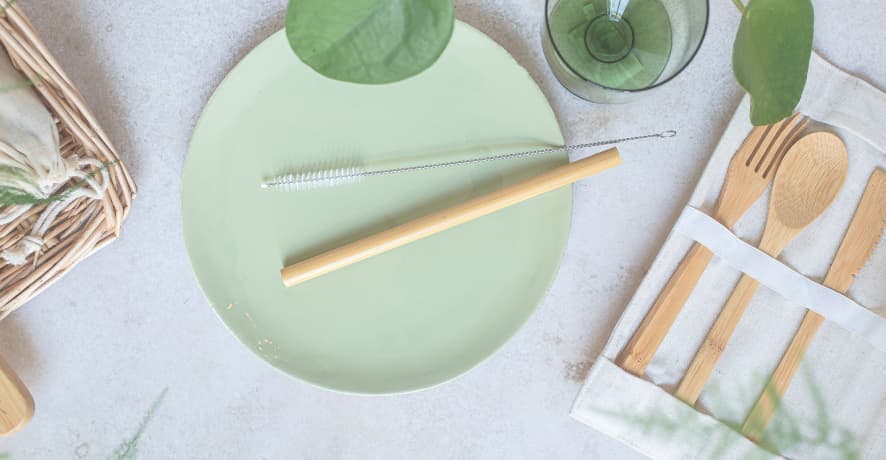
What are the 3 Pillars of Corporate Sustainability?
In this article, we'll explore what the 3 pillars of corporate responsibility are, why they're important, and how businesses can turn them into practical action.
ESG / CSR
Industries



From paper plates, reusable plastic, and paper straws – the world has been making a noticeable effort on improving the types of materials being used in our day-to-day lives, such as cafes and restaurants where plastic straws are becoming obsolete.
Another area where sustainability is seeking to improve is with sustainable packaging – with bamboo being a primary component for much of sustainable packaging and many other daily items.
How sustainable is bamboo, and are there ways to maximise the use of bamboo?
Bamboo, while commonly referred to as a tree, is a grass with over 1000 species native to subtropical climates such as South America, Asia, and sometimes even parts of Australia, Africa, and the United States. Similar to other grasses, the stems of bamboo are hollow and bamboo does not have bark like typical trees do.
Bamboo is a type of grass that grows from the root and matures within three to five years. Typically, a stalk of bamboo can live for around seven to ten years – with entire bamboo groves living for up to hundred years or more. Even when bamboo is cut, it can grow back very quickly – and it is most accustomed to growing back in warm areas such as tropical and temperate climates.
Seeing as bamboo is easily generated, and has been used in multiple ways such as in construction, fabric, and packaging – it has been marked as a sustainable plant to be used in eco-friendly products amongst many – but is bamboo as sustainable as many believe it to be?

Due to bamboo’s quick-growing nature and lack of the need of pesticides, it has gained the label of being an eco-friendly grass and has been advertised for being used in many sustainable products. There is no doubt that bamboo has become one of the most widely used and recognised sustainable materials – but how much of bamboo’s sustainability is overhyped?
Bamboo has garnered praise for its ability to grow rapidly and resist pests, but there are some reasons why bamboo has been criticised for not being as sustainable as it could be. For instance, there have been claims that bamboo may lack sustainability due to the fact that despite bamboo in itself being sustainable – the process for harvesting said bamboo isn’t all that eco-friendly. This is because bamboo used for everyday materials is usually processed through either mechanical or chemical processes, which can be bad for the planet. However, mechanical processing for bamboo is less carbon intensive – as it is simply the act of crushing the bamboo to break it down into smaller pieces and fibers that can then be spun into yarn for clothes and sheets. The downside to mechanical bamboo processing is that it is more expensive and cannot be done on a large scale, meaning that more resort to the act of chemical bamboo processing. Chemical processing of bamboo is particularly bad for the environment as opposed to mechanical bamboo processing, as chemical bamboo processing is unnatural and often resorts to the use of finite resources that pollute the planet. In addition, many will chemically process bamboo only to use small portions of it so that they can label their clothing as, “made with organic materials” – when in reality, only a fraction of the clothing is made from bamboo.
Another issue with bamboo and sustainability is the fact that synthetic materials such as viscose and rayon are made from the pulp of plants or trees – such as bamboo. Therefore, although bamboo itself may be a sustainable material – the pulp can still be used to create synthetic fibers that can be harmful to the environment.
👉 Bamboo could be a sustainable resource, but instances where a product or piece of clothing is only made with a small amount of bamboo doesn’t balance out the carbon footprint created from the processing of the bamboo itself.
Does this make bamboo a lost cause?

Despite the potential negative consequences to using bamboo, there are several unique benefits to bamboo over other sustainable materials. For instance, bamboo grows extremely fast – and therefore can be more abundant than other types of sustainable materials as it can be reproduced at a faster rate than other sustainable materials. In addition to this, bamboo does not need pesticides or herbicides to grow and doesn’t require irrigation – allowing for bamboo to pertain to the ideals of sustainable and climate smart farming and reduce water usage. Even better: bamboo rarely needs to be replanted, making it perfect for growing food forests and facilitating a balance between oxygen and carbon dioxide in the atmosphere.
Bamboo can also help other plants to thrive, as bamboo can help to hold soil together. This is due to the fact that bamboo is technically a grass, and only lives around 6 inches above soil levels. The densely clumped roots of bamboo can help to keep soil together and prevent erosion – if soil erosion were to occur, it could harm other nearby plants. Therefore, bamboo can help to stimulate the livelihood of other plants into the area and encourage a healthy environment with well-functioning biodiversity.
Many people have heard the phrase that all it would take to solve climate change is to plant a million trees, but did you know that bamboo can accomplish the same task with less risk? Bamboo can help in terms of reforestation, as it can also help to absorb carbon dioxide from the atmosphere in the same way that trees do. Even though bamboo isn’t a tree by definition, it can still prove a beneficial resource to absorb excess carbon dioxide – especially seeing as bamboo is fire resistant. In other words, bamboo is a more surefire method for carbon sequestration than trees, as they may not survive wildfires that bamboo will. Despite not being an official type of tree, bamboo is strong and flexible – making it a versatile material to be used in many products or sustainable circumstances.
Bamboo clearly has many benefits both in nature and as a sustainable resource in other products, but how can individuals and companies alike maximise their use of bamboo?
Bamboo is used in a variety of ways, and arguably – is one of the most sustainable materials being used today, which can explain why bamboo is having its moment in the sun.
For example, bamboo can be used for construction in houses, office buildings, schools, and even for scaffolding in the midst of other construction projects. Bamboo can be used not just on the outside of buildings and homes, but inside them too – as bamboo can be used to create furniture like chairs, tables, and even bed frames. Bamboo is most well known for being used in clothes, sheets, and in paper utensils and plates in cafes and restaurants – but bamboo has been incorporated into more than just these daily used items.
Bamboo can also be used to make paper, diapers, rugs, instruments, bikes, toys, and even cooking fuel that has been used in countries like China and Japan for hundreds of years. In addition to this, bamboo can also be used for medicinal purposes to treat kidney diseases and even cancer. Bamboo isn’t just used as medicine, but has been used as a way to prevent bacteria growth and act as a natural preservative as well as provide anxti-oxidants in meals.
Also, even if the item you’re buying isn’t sustainable – bamboo might be the reason why the packaging is at least eco-friendly. This is because bamboo is often used to wrap fragile or glass products instead of using bubble wrap or single use plastics, or even using bamboo to create a recyclable shipping box.
Clearly, bamboo is extremely versatile and can be used to promote sustainability – but how can individuals and businesses make the most of their bamboo usage?

Bamboo can be a sustainable material, but only if it is used in the right ways. For example, individuals and businesses seeking to use bamboo as a sustainable resource should aim to use mechanically processed bamboo – as chemically processed bamboo is bad for the environment. Also, it is best to make use of bamboo for long-standing projects instead of short term ones. In other words, it is more beneficial to the environment to use bamboo for something like construction as opposed to using bamboo in single-use recyclable utensils or containers – whereas in that case, it would be better for the environment to purchase a glass or aluminum reusable container that can be washed and reused for years to come.
Companies seeking to use bamboo to reduce their carbon emissions may be better off investing in planting bamboo trees themselves rather than purchasing products with bamboo labeled as “ made with sustainable materials” – as more carbon dioxide will be removed from the air by planting bamboo as opposed to making the switch from paper plates to bamboo utensils.

Bamboo isn’t the only sustainable material that has been getting a lot of attention as of late. In 2023, many different materials are being used to increase the sustainability of products – some of which may be surprising.
Seaweed isn’t just being used for sushi, but also for creating eco-friendly packaging such as the film used on smartphones and laptops when opening them out-of-the-box.
Styrofoam is out, and peanuts are in – but not the kind you eat. Biodegradable packing peanuts are a great alternative to typical styrofoam packing peanuts, as styrofoam doesn’t decompose and can cause harm to the environment.
In a similar way to seaweed, mushrooms can be extracted and used to create film to cover screens for technology or other fragile items upon shipping.
There are many different types of sustainable plants, but ultimately – bamboo still remains as one of the most interchangeable and useful sustainable grasses that can be used to lessen the environmental impact of clothing, buildings, and even boost the power and preserve food. However, while bamboo in itself is sustainable – people and businesses alike should remain aware that bamboo can be bad for the environment depending on the way it is processed. If the bamboo is processed in a sustainable manner and isn’t being used in products so companies can greenwash their customers – bamboo can be environmentally-friendly.
If reading this article about bamboo and if it is really sustainable and how to improve the use of bamboo has made you interested in reducing your carbon emissions to further fight against climate change – Greenly can help you!
Understanding what materials to swap out in order to improve the sustainability of your company can be daunting and confusing, but don’t worry – Greenly’s got you covered. Book a demo to learn more about how Greenly can help you to become more sustainable.
Greenly can help you make an environmental change for the better, starting with a carbon footprint assessment to know how much carbon emissions your company produces.